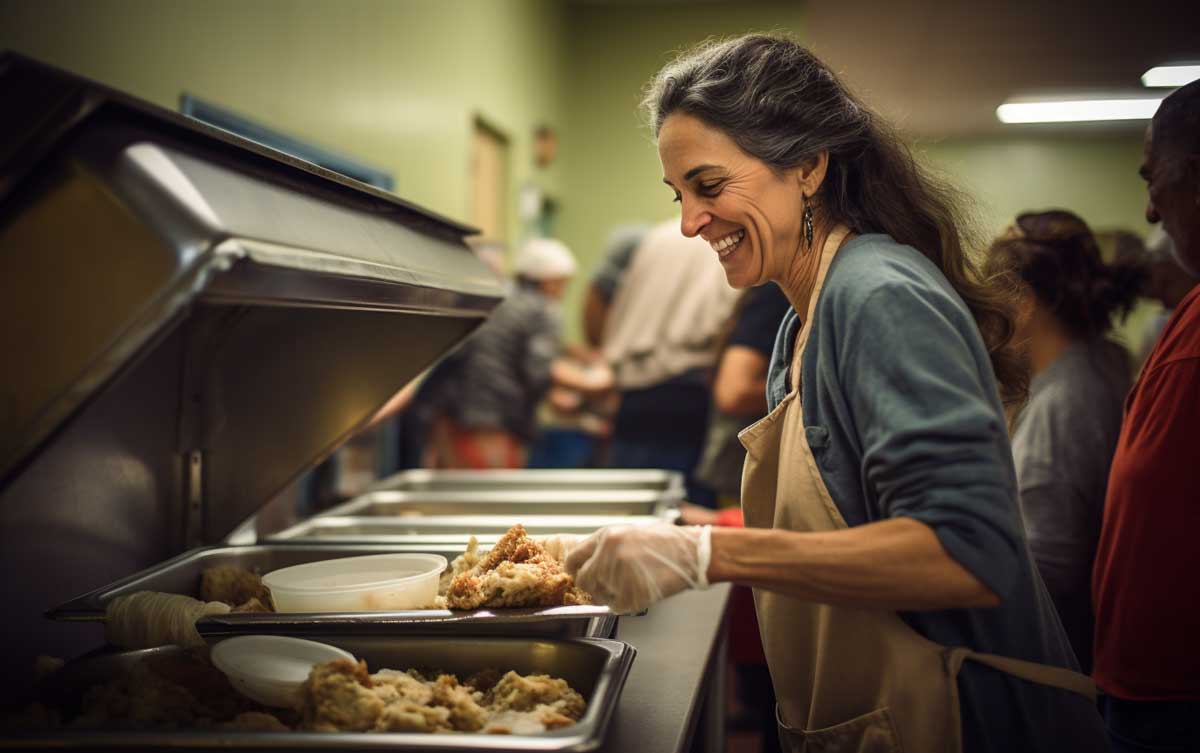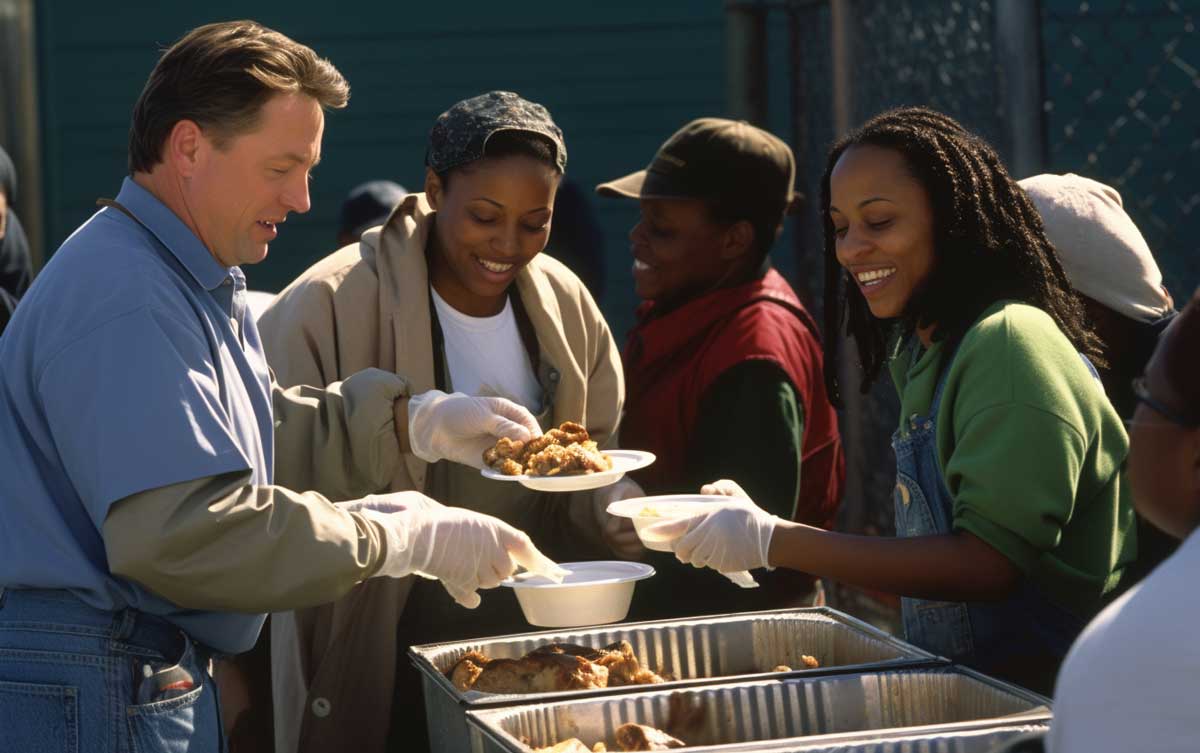Clothing assistance programs offer vital support by providing essential attire to those facing financial challenges. Bridging a critical gap, these programs work in tandem with charitable entities, non-profits, and government agencies, sourcing community donations.
Donations range from winter wear and maternity clothes to professional attire. Eligibility often hinges on income requirements, ensuring genuine beneficiaries. Approved recipients can receive clothing through vouchers, clothing banks, or community events. Beyond attire, these initiatives bolster self-confidence, paving the way for academic and professional success.
Partnering with services like food banks, they adopt a holistic approach. For assistance, consult local entities or major charities like Catholic Charities or Salvation Army. Read on to further understand the essence of clothing programs and how they can uplift individuals, while enhancing life quality through communal support.
Types of Programs Available
Clothing assistance programs cater to diverse needs, ensuring accessibility and choice. Here are the most common types:
-
Clothing Vouchers/Gift Cards: Programs offering vouchers enable recipients to shop at specific outlets, allowing them to select suitable styles and sizes.
-
Clothing Closets/Banks: These provide direct access to varied clothing, from winter wear to professional attire, enabling individuals to pick according to their needs.
-
Community Events & Partnerships: Some programs join forces with organizations, hosting events like clothing drives or collaborating with churches, enhancing the clothing availability spectrum.
-
Resale Shops & Charity Programs: Collaborating with resale outlets or operating their own, some programs offer affordable, quality clothing. This model promotes program sustainability and provides budget-friendly choices.
-
Specialized Programs: Catering to niche requirements, some initiatives focus on specific attire types, such as professional outfits or maternity wear.
The essence of these programs is to bolster quality of life, dignity, and self-assuredness. Those in need should approach local charities or organizations for assistance.
Clothing Assistance Qualification and Requirements
Eligibility for clothing assistance programs, while differing among organizations, primarily targets those enduring financial strain. Here are the standard criteria:
-
Proof of Income: A key criterion, it ensures assistance goes to the neediest. Documentation may include pay stubs or tax returns.
-
Household Size Verification: To gauge specific needs, some programs request documents like birth certificates or leases, clarifying household numbers.
-
Residency: Many programs cater to specific regions, aiming to support the local community. Verification of residence ensures resources aid those truly local.
-
Specialized Needs: Some programs, like those offering job interview attire or maternity clothes, may request additional proofs, such as interview confirmations or pregnancy documentation.
In essence, these qualifications maintain resource equity, enabling genuine beneficiaries to uplift their living standards and ensure well-being for themselves and their kin.
Eligibility for Clothing Assistance Programs
Clothing assistance programs crucially support those unable to afford essential attire. Their eligibility criteria include:
-
Proof of Income: To allocate resources to the most deserving, many programs set income limits. Verification often involves pay stubs or tax returns.
-
Household Size Verification: To cater to individual needs, some programs require household size proof using documents like birth certificates or leases. For instance, larger families may necessitate more clothing.
-
Residency: Programs often focus on local communities. Residency proofs ensure resources benefit those genuinely local, fortifying community bonds.
-
Specific Assistance Types: Programs might have distinct criteria based on aid type. Those offering interview clothing may need job interview confirmations, while maternity programs could require pregnancy proof.
In sum, these programs demand accurate income, household size, and residency proofs, ensuring deserving recipients enhance their life quality.
Providing Proof of Income or Need
Clothing assistance programs necessitates applicants to prove their genuine need, ensuring fair allocation of limited resources. Key requirements include:
-
Proof of Income: Central to determining financial need. Applicants must offer accurate documentation like pay stubs, tax returns, or government assistance records.
-
Household Size: To tailor the assistance. Documentation like birth certificates or leases can confirm household size, impacting resources allocated. For instance, bigger families might need more clothing.
-
Residency: Many programs prioritize local communities. Confirming one's residency, often within specified geographic areas, ensures resources aid truly local beneficiaries, fostering community ties.
-
Specific Needs: Depending on aid type, programs might demand additional proofs. Those focusing on interview attire might want job interview confirmations; maternity programs might ask for pregnancy documentation.
In essence, accurate proof of need ensures resources benefit those most deserving, magnifying the program's community impact.
Documents Required to Apply for Assistance
Assistance programs, vital for those in financial crises, offer support in areas like food, housing, and healthcare. To optimize the application process, preparation is crucial. Key documentation includes:
-
Proof of Income: Central to assessing an applicant's financial need. Reliable sources include recent pay stubs, tax returns, or government aid documents. Precision ensures accurate eligibility determination.
-
Household Size: Assists in resource allocation. Verification through birth certificates, leases, or IDs is essential. Larger families might entail more assistance, emphasizing fair distribution.
-
Residency: Programs often serve specific locales, hence proving residency—through utility bills, leases, or IDs with addresses—is fundamental.
-
Specialized Needs: Some programs, like those offering clothing, mandate extra documentation, like job interview confirmations or maternity proofs.
Gathering comprehensive, accurate documentation enhances the application process and ensures those genuinely in need benefit.
Age Restrictions for Clothing Assistance Programs
Clothing assistance programs significantly support those in need, affording them the fundamental dignity of appropriate attire. These initiatives are crafted to ease the financial strain of procuring clothes, fostering individual dignity and self-worth. Notably, age restrictions often characterize these programs, optimizing resource allocation for specific populations.
These age-specific guidelines direct resources to those with age-related clothing demands. For instance, distinct programs may target children, who frequently outgrow clothes or seniors with specialized requirements like mobility-centric attire. Such restrictions guarantee that distinct age-related challenges are efficiently addressed.
However, age criteria can differ across programs, with some adopting stringent limits while others evaluate individual needs. It's pivotal for applicants to comprehend a program's eligibility specifics. Often, programs that cannot serve certain ages cooperate with others to ensure holistic support. Ultimately, age restrictions maximize program efficacy, assisting those with unique, age-dictated clothing needs.
Clothing Programs Offered by Government Agencies
Government-run clothing programs are instrumental in ensuring essential clothing access for underserved individuals and families. These initiatives, tailored for low-income groups, alleviate financial strains and recognize clothing's pivotal role in upholding dignity and affecting life quality.
For diverse situations, from job interviews to school, appropriate attire is paramount. These agencies offer clear, transparent eligibility guidelines considering factors like household income and financial aids, ensuring that assistance targets genuine need. Differing age groups have varied clothing needs, and government programs cater to these, from children's sizes to specialized attire for seniors' unique requirements.
Collaboration with community entities amplifies this impact. Partnerships with nonprofits, charities, and clothing banks bolster resource pools and expertise. Beyond direct distribution, some programs provide clothing vouchers, offering recipients choice and empowerment in their selections. Ultimately, government clothing programs are indispensable, fostering well-being and equal access to essential attire.
Social Security Administration (SSA) Programs and Benefits
The Social Security Administration (SSA) stands as a cornerstone of government support, offering a suite of financial programs for citizens in diverse circumstances. Primary among these is retirement benefits, ensuring those who've contributed to Social Security receive a stable post-retirement income.
The SSA's disability benefits address the financial challenges of those with disabilities, offering essential income and medical support. Meanwhile, survivor benefits uphold the welfare of families after the death of a primary earner. Furthermore, the Supplemental Security Income (SSI) attends to the elderly, blind, or disabled with limited resources, ensuring access to basic needs.
Notably, the SSA champions accessibility; its infrastructure, spanning online platforms to in-person assistance, simplifies benefit navigation. Ultimately, SSA's programs are pivotal, fortifying financial stability for countless individuals and families, guaranteeing them a secure future.
US Department of Agriculture (USDA) Food Distribution Program on Indian Reservations (FDPIR)
The US Department of Agriculture's Food Distribution Program on Indian Reservations (FDPIR) is an indispensable initiative that addresses the nutritional needs of low-income Native American households on reservations. Many of these communities face food insecurity due to limited access to quality grocery options.
The FDPIR directly counters this, supplying diverse food items, from fresh produce to traditional foods like bison and salmon. This not only combats prevalent health issues, like diabetes, but also fosters healthier dietary choices.
Economically, FDPIR bolsters tribal regions by purchasing from local agricultural sources, driving job creation and economic stability. The program's offerings, rooted in income eligibility, respect and incorporate the cultural preferences of tribes.
Through collaboration with tribal stakeholders, the USDA ensures the program remains culturally attuned and responsive. Ultimately, FDPIR is more than just a food distribution initiative; it’s a comprehensive effort promoting health, economic growth, and cultural respect in Native American communities.
Temporary Assistance for Needy Families (TANF) Program
The TANF program provides vital financial aid for low-income families, targeting poverty alleviation and self-sufficiency. The program not only offers cash benefits to cover basic necessities but also delivers a suite of supportive services.
These include job training, education, vocational programs, and childcare assistance, aiming to uplift adults into employment. TANF emphasizes children's education by providing academic support and after-school activities, fostering long-term socioeconomic growth.
To be eligible, individuals must meet set income requirements and engage in work-related activities, promoting a commitment to self-sustainability. Administered at state levels, this allows tailored services and encourages innovative, community-centric initiatives through local collaborations. TANF's holistic approach seeks to break poverty cycles, championing family stability and prosperity.
Low-Income Home Energy Assistance Program (LIHEAP)
LIHEAP addresses the rising challenge of affording energy bills for low-income households. Ensuring families, especially those with vulnerable members, don't compromise on essential heating or cooling, the program offers financial aid tailored to the individual's need.
Beyond this immediate relief, LIHEAP advances long-term solutions by offering services like home weatherization and energy efficiency education, emphasizing sustainable consumption. The program also caters to broader energy-related challenges, such as system repairs and emergency fuel provision.
Eligibility revolves around specific income benchmarks, favoring households with incomes at or below 150% of the federal poverty level. Through immediate assistance and sustainability initiatives, LIHEAP ensures that struggling households maintain health and well-being without compromising their financial stability.
Non-Profit Organizations that Offer Clothing Assistance
Non-profit organizations significantly bridge societal gaps by providing essential clothing assistance programs, ensuring that financial constraints don't hinder access to quality attire. The Salvation Army, with its expansive network of thrift stores, offers diverse clothing solutions, collaborating with local entities for effective distribution. Catholic
Charities extends its services beyond mere necessity, understanding clothing's role in boosting self-esteem. They engage in a range of initiatives, from clothing vouchers to drives, catering to the underprivileged. Community Clothing Assistance (CCA) specifically targets low-income demographics, offering affordable clothing while partnering with local institutions to widen their reach.
Besides these renowned organizations, myriad local entities, ranging from clothing banks to resale shops, offer invaluable assistance. Typically, beneficiaries must meet certain income prerequisites. Through these programs, non-profits not only address a fundamental need but also uplift the dignity and overall well-being of recipients.
Catholic Charities USA
For over a century, Catholic Charities USA has stood as a pillar of support for vulnerable individuals and families, deeply rooted in the belief of every person's intrinsic dignity. Central to their offerings is the clothing program, acknowledging clothing's pivotal role in one's well-being and opportunities.
Beyond mere provision, they comprehend the significance of attire in life events like interviews and school, hence, they curate collections of both new and gently-used items. Their unique approach includes distributing clothing vouchers, allowing recipients autonomy in their selections, and preserving their dignity. Additionally, they operate clothing closets and organize drives, collaborating with local entities to optimize donations.
While clothing remains a focal point, Catholic Charities offers a holistic suite of services, addressing housing, food security, and employment. Those interested in their clothing assistance should directly contact local branches. Through unyielding dedication, Catholic Charities fortifies communities, embodying hope and a vision for a brighter future.
Goodwill Industries International, Inc.
For over a century, Goodwill Industries International, Inc., a renowned non-profit organization, has been an unwavering force for change, providing job training, employment services, and community programs for those facing employment barriers. A cornerstone of their community support is the clothing assistance program. Acknowledging clothing's profound influence on one's confidence and overall life trajectory, Goodwill ensures access through their thrift stores, selling donated items affordably.
Beyond mere retail, these stores bolster Goodwill’s mission, offering job training opportunities for many. Collaborative efforts with community entities further amplify Goodwill’s reach, collecting and distributing clothing donations to those most in need. Importantly, Goodwill's support isn't restricted to clothing alone—they extend help with household items, furniture, and job resources.
Those seeking assistance should approach their local Goodwill directly for specific guidance. Through their comprehensive services, Goodwill exemplifies unwavering commitment to individual empowerment and community fortification.
FAQs
1. What types of clothing does Goodwill accept for donation?
Goodwill accepts a wide range of clothing, including gently used everyday wear, professional attire, and seasonal items. They also appreciate donations of new clothes with tags.
2. Can I receive a tax receipt for my clothing donation?
Yes, when you donate items to Goodwill, you can request a tax receipt for your charitable contribution.
3. Do Goodwill thrift stores only carry donated items?
Primarily, Goodwill thrift stores stock donated items. However, some stores might have partnerships or programs that occasionally introduce new items or special inventory.
4. How do Goodwill's job training programs relate to the thrift stores?
The thrift stores act as real-world training grounds for individuals enrolled in Goodwill's job training programs. They learn retail, customer service, and management skills firsthand.
5. Is financial assistance available for purchasing items at Goodwill stores?
While Goodwill prices items affordably, specific financial assistance programs might vary by location. It's recommended to check with your local store or organization for any available assistance.
Conclusion
Goodwill Industries International, Inc. stands as an emblem of community support, offering more than just clothing assistance. By merging retail with empowerment, they not only clothe individuals but also offer paths to self-sufficiency. Their holistic approach—spanning from thrift stores to job training—reinforces a mission dedicated to enriching lives and fostering community strength.
Find out if grants can help pay your debt off from our blogs at Gov-Relations today.







